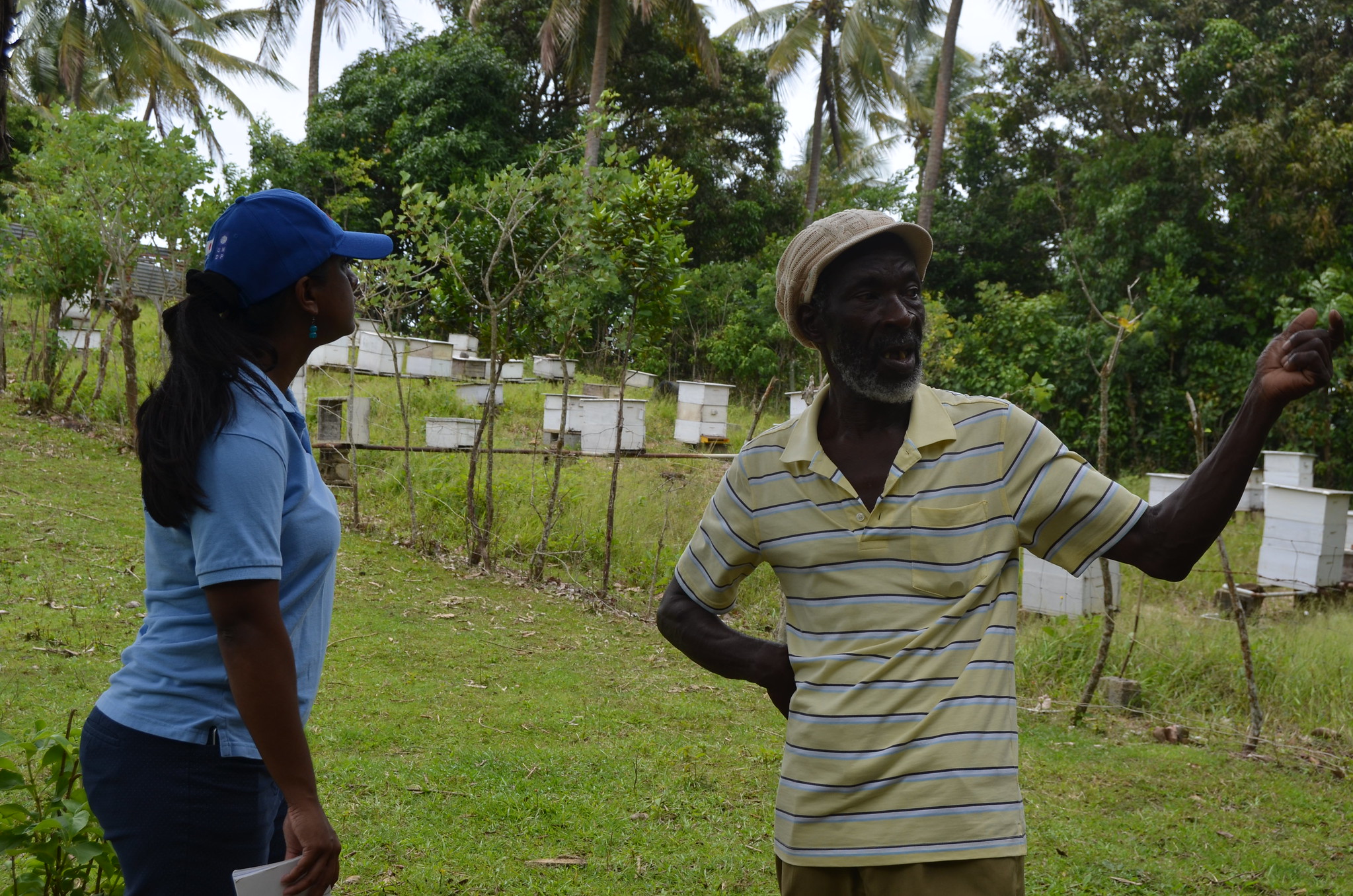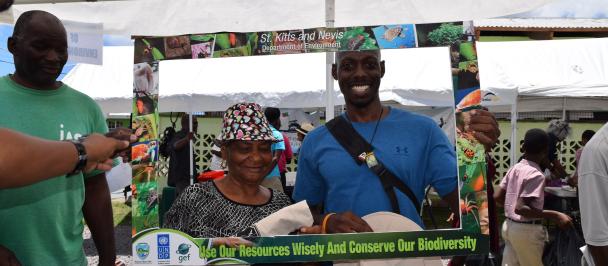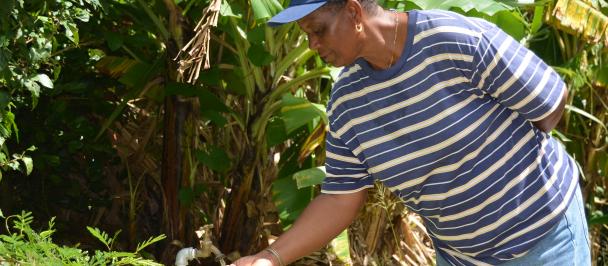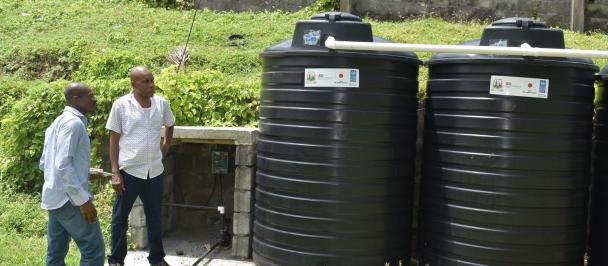St. Lucian farmer speaking with representative from UNDP Barbados and the Eastern Caribbean.
Saint Lucia was recently prominently featured in the international news, owing to its multilateral diplomatic leadership, as it convened the 40th meeting of CARICOM Heads of Government is Gros Islet, early July.
The Caribbean Community Chair and Prime Minister of the country, the Hon. Allen Chastenet, also played host to both the United Nations Secretary-General and the Norwegian Prime Minister, on that occasion. Mr. Chastenet’s nation is proudly ranking 90th of the world in social wellbeing, as measured by UNDP’s Human Development Index, and even more to have gained one position last year, not a meager feat. It offers similar figures of high human welfare as Colombia, and stands ahead of Fiji and the Dominican Republic, if we compare with SIDS in the region and beyond. The rejoicing and success of this year’s Carnival celebrations was surely well-deserved!
St. Lucia is on the edge of reaching the elite of nations where social cohesion is a given. The country runs a US2.3 billion economy, like the Seychelles or Antigua & Barbuda, and the Government manages a tax revenue of around 20% GDP - like Grenada, more than Antigua, but less than St. Kitts and Nevis. More public money is always a double-edged sword: it represents more fiscal space for the Executive to direct the investment policy, but it also means a greater fiscal pressure on businesses and individual taxpayers. It helps the economy – and the more underserved of its citizens - that St. Lucia has maintained inflation under tight control over the past years. This situates the GDP per capita of the island at roughly US$14,000.
The economic results of the country ae mostly owed to its own efforts. Foreign Direct Investment represents 6% of GDP: it is the national capital and country savings which generate the investment needed for its development. Official Development Assistance is virtually non-existent, at 1% of GNI - like Grenada – to illustrate the notion that several of the OECS countries are actually donor-orphans. This has not prevented the Saint Lucians from enjoying reasonable social services. The country’s children are covered by 13 years of schooling, the 10% primary dropout is not unheard of in richer countries, and the government spends 5.7% of GDP on Education, which is on the high end of the spectrum. No wonder that all schools have access to Internet and the primary teacher-pupil ratio (15) scores amongst the best.
The big social gap on the island is gender inequality. Health is a social determinant of development that still requires significant efforts. The old age needs further protection, with barely over a quarter of the relevant age group cashing a pension – compared with 83% of pensioners in Antigua and Barbuda. And the labour market is fragile, with 21% unemployment, 45% of youth joblessness and 30% of vulnerable employment. Women are only paid, in average, three quarters the salaries of their male counterparts. 15% fewer women than men participate in the local workforce.
Both the maternal mortality and the adolescent birth rates are too high and 8% of women are married by the age of 18. Only 55% of women use contraceptives when married or in a union; 17% of family planning needs remain unmet. A 2% of pregnant Saint Lucians require better antenatal care and 1% of them will give birth without the attendance of skilled healthcare workers. Coverage needs to be completed so that all births are registered, filling an 8% gap. 11% of the children lack immunization on DPT, 15% lacks measles vaccination, 2.5% suffer from stunting, and the infant mortality rate is reaching 12%. This contrasts with the excellent figures of 90% of the population living with improved sanitation, and with the almost universal rural access to electricity. Finally, while the prison population remains within regional figures, the homicide rate doubles that of Antigua or Barbados, calling attention to crime and violence and to the need to strengthen citizen security.
A broadly positive state of social affairs in terms of human development coexists with several areas requiring government attention, political priorities and private commitment. If St. Lucia wants to play in the Major Leagues where Barbados and The Bahamas militate, the coming years will require policies to strengthen the labour market, a better coverage of the seniors, a robust public healthcare and visible efforts towards gender equality. Such results are clearly within reach – but they demand unwavering investments over time and a social and political drive towards more sustainable human development.

 Locations
Locations





